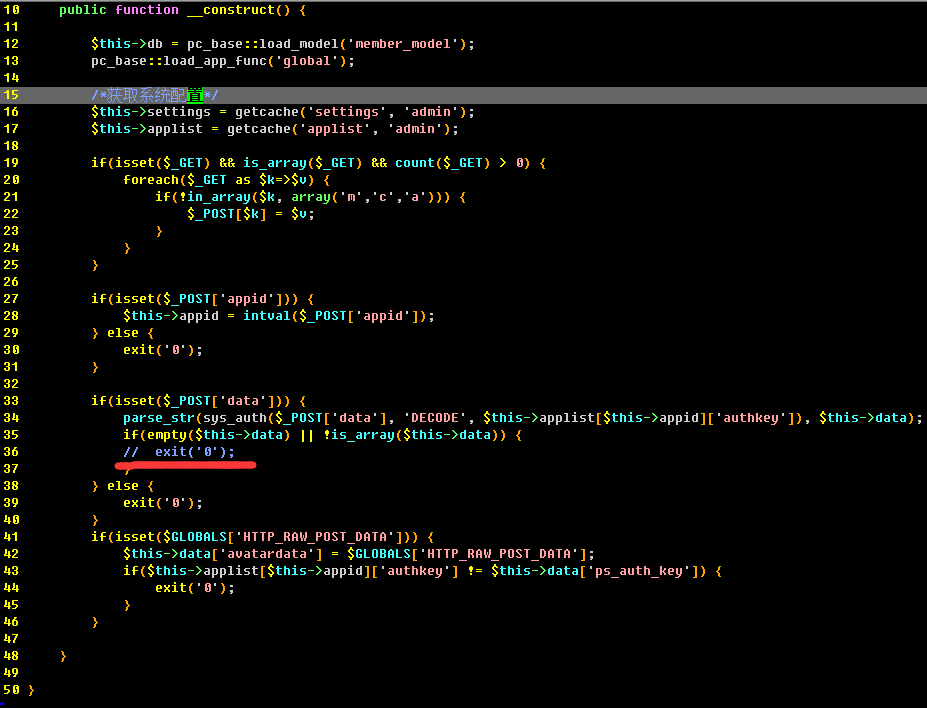目录伪静态在phpcmsv9中是不支持了,如果我们希望有这种效果是需要自行进行二次开发了,下面我们一起来看看具体的配置方法。
URL规则部分,使用phpcms的大多是知道的,就不再赘述。如果需要支持自定义文件名的,需要去看看phpcms v9自定义HTML文件名一文。下面就着重将Web服务器重写链接这一项。
phpcms v9怎么目录式伪静态:
首先看urlrewrite的规则,这个是Nginx下的,其它环境下的规则自己转换下。
- rewrite ^/([a-z]+)/$ /index.php?m=content&c=index&a=lists&catdir=$1 last;
- rewrite ^/([a-z]+)/index_(\d+)\.html$ /index.php?m=content&c=index&a=lists&catdir=$1&page=$2 last;
- rewrite ^/([a-z]+)/([a-z0-9-]+)\.html$ /index.php?m=content&c=index&a=show&catdir=$1&prefix=$2 last;
- rewrite ^/([a-z]+)/([a-z0-9-]+)_(\d+)\.html$ /index.php?m=content&c=index&a=show&catdir=$1&prefix=$2&page=$3 last;
这个Nginx规则就是把后面的链接重写为前面的链接形式的。所以接下来需要做的就是让后面的链接能够访问到正确的页面。phpcms v9默认是无法访问到正确页面的,因为缺少必要的参数。下面就对phpcms v9进行修改。
1、打开phpcms\modules\content目录下的index.php找到 public function lists() {,将$catid = intval($_GET['catid']);替换成:
- if(isset ($_GET['catid'])){
- $catid = intval($_GET['catid']);
- }else{
- $catid=$this->_getCategoryId($_GET['catdir']);
- }
- //并且在最后的}?> 前添加:
- private function _getCategoryId($catdir){
- if(!strpos($catdir,'/')) {
- $dirname = $catdir;
- }else {
- $dirname = end(explode('/',$catdir));
- }//dxpang.com
- $this->category_db = pc_base::load_model('category_model');
- $result = $this->category_db->get_one(array('catdir'=>$dirname));
- return $result['catid'];
- }
这段代码的作用就是判断参数是否catdir,栏目自定义目录名,如果是目录名则根据目录名得到对应的catid,从而顺利得到栏目页。理解了自定义目录的伪静态方法之后,自定义文件名的伪静态也就可以类似解决。
2、打开phpcms\modules\content目录下的index.php找到 public function show() {,
- //将:
- $catid = intval($_GET['catid']);
- $id = intval($_GET['id']);
- //替换成:
- if(isset ($_GET['catid'])){
- $catid = intval($_GET['catid']);
- }else{
- $catid=$this->_getCategoryId($_GET['catdir']);
- }
- if(isset($_GET['id'])){
- $id = intval($_GET['id']);
- }else{
- $id = $this->_getPrefixId($_GET['catdir'],$_GET['prefix']);
- }
跟上面一样,还需要加上判断出文章id的函数,函数如下:
- private function _getPrefixId($catdir,$prefix){
- if(!strpos($catdir,'/')) {
- $dirname = $catdir;
- }else {
- $dirname = end(explode('/',$catdir));
- }
- $this->category_db = pc_base::load_model('category_model');
- $result = $this->category_db->get_one(array('catdir'=>$dirname));
- $catid = $result['catid'];
- $siteids = getcache('category_content','commons');
- $siteid = $siteids[$catid];
- $CATEGORYS = getcache('category_content_'.$siteid,'commons');
- if(!isset($CATEGORYS[$catid]) || $CATEGORYS[$catid]['type']!=0) showmessage(L('information_does_not_exist'),'blank');
- $this->category = $CAT = $CATEGORYS[$catid];
- $this->category_setting = $CAT['setting'] = string2array($this->category['setting']);
- $siteid = $GLOBALS['siteid'] = $CAT['siteid'];
- $MODEL = getcache('model','commons');
- $modelid = $CAT['modelid'];
- $tablename = $this->db->table_name = $this->db->db_tablepre.$MODEL[$modelid]['tablename'];
- $result = $this->db->get_one(array('prefix'=>$prefix));
- if(emptyempty($result)){
- $result = $this->db->get_one(array('id'=>$prefix));
- }
- return $result['id'];
- }
到这里之后,就可以通过自定义目录加自定义文件名的形式访问了。其他一些细节的地方,就不再赘述.
扫一扫手机访问





